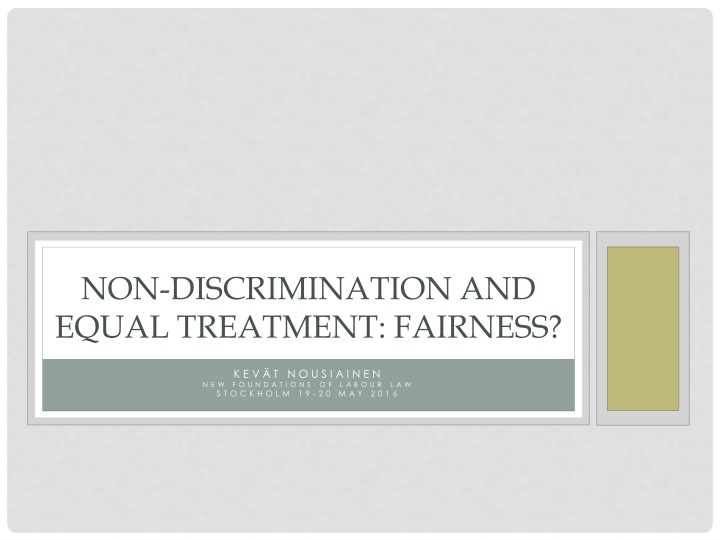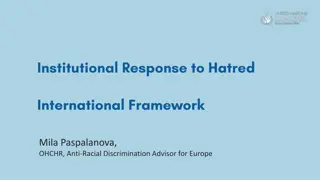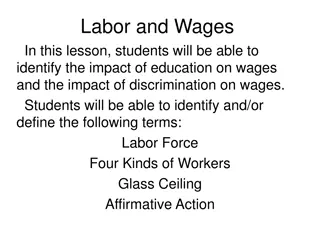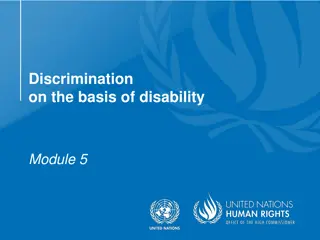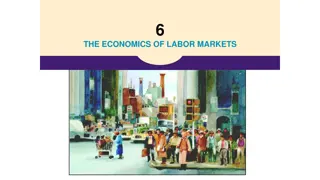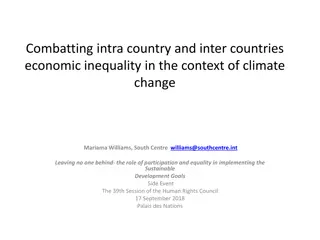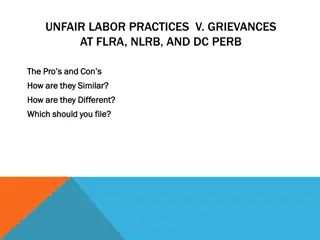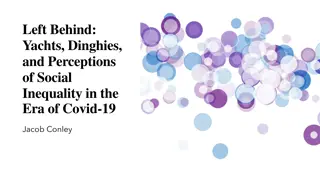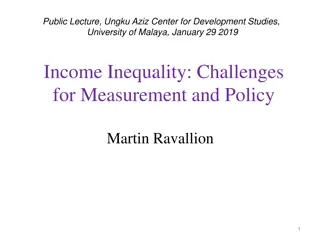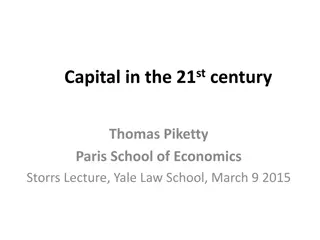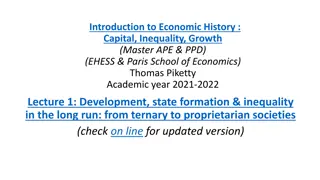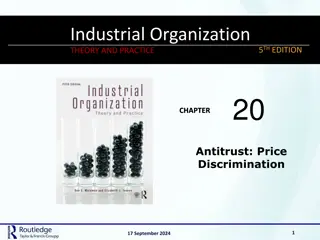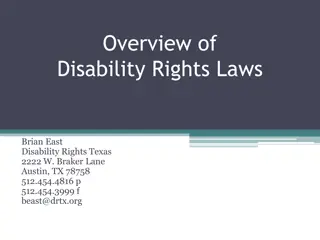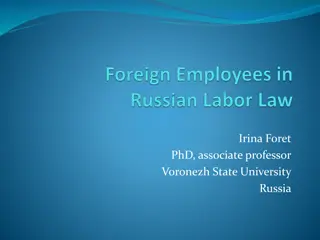Examining the Intersection of Non-Discrimination and Social Inequality in Labor Laws
Exploring the correlation between the rise in inequality and non-discrimination laws in the context of labor rights and social justice. Analyzing the impact of globalization, neoliberal policies, and anti-discrimination measures on protecting vulnerable groups in the labor market.
Download Presentation

Please find below an Image/Link to download the presentation.
The content on the website is provided AS IS for your information and personal use only. It may not be sold, licensed, or shared on other websites without obtaining consent from the author.If you encounter any issues during the download, it is possible that the publisher has removed the file from their server.
You are allowed to download the files provided on this website for personal or commercial use, subject to the condition that they are used lawfully. All files are the property of their respective owners.
The content on the website is provided AS IS for your information and personal use only. It may not be sold, licensed, or shared on other websites without obtaining consent from the author.
E N D
Presentation Transcript
NON-DISCRIMINATION AND EQUAL TREATMENT: FAIRNESS? K E V T N O U S I A I N E N N E W F O U N D A T I O N S O F L A B O U R L A W S T O C K H O L M 1 9 - 2 0 M A Y 2 0 1 6
WHAT AM I GOING TO SAY? Coincidence of rise in inequality and non- discrimination law; reasons behind Legal equality: not one principle but many EU non-discrimination law; its capacity as corrective justice Protecting substantive rights through non- discrimination Closing down
AT THE RISE OF SOCIAL INEQUALITY, BRING IN NON-DISCRIMINATION? Inequality is increasing due to globalisation, neo- liberal economic policies and austerity politics Labour law is losing ground, protection of the weaker party in labour law is losing ground Boost of EU and national anti-discrimination law Is non-discrimination the new standard for social and labour law? Are victims of discrimination the groups most vulnerable to social dumping?
LEGITIMATE AND ILLEGITIMATE CAUSES FOR MORE ANTI- DISCRIMINATION Identity rather than social politics (Frazer) New groups demand recognition Non-discrimination gives access to new groups to the labour markets; more social inclusion Dismantled welfare states; non-discrimination replacing social rights EU mandate to act: weak for social protection, high for non-discrimination
FOUR ASPECTS OF LEGAL EQUALITY (MCCRUDDEN AND PRECHAL 2009) The general principle of equality as rationality, like shall be treated alike, different differently (non- discrimination: formal equal prohibition to sleep under bridges ) Equal protection of human and basic rights (non- discrimination) Anti-discrimination: suspect and other grounds, direct and indirect discrimination, possible combined with positive action Equality as positive duties to promote equality (limited by the general principle of equality)
ANTI- AND NON-DISCRIMINATION: WHAT SORT OF JUSTICE? Corrective justice, duty to compensate wrongs (law), distributive justice, social fairness (politics)? Equality as an empty shell or yet to be complete ideal of substantive equality (Westerman )? The radical openness of threating what is like, alike: what is like or different? Comparison as a crucial test Suum quique? Material norm needed to establish right to equality Anti-discrimination as both corrective and distributive justice
SYMMETRICAL PROHIBITIONS OF DISCRIMINATION EU anti-discrimination law prohibits discrimination on the grounds of sex, racial/ethnic discrimination, religion or belief, disability, age, and sexual orientation Both men and women, majority and minority ethnic groups are protected Present discontents: persons belonging in the privileged end of the divide evoke anti-discrimination law, and or believe it unjustified
DUTY TO PROMOTE EQUALITY National constitutions EU treaties: Articles 8 TFEU and 157(4) TFEU concern only gender equality; the crosscutting mainstreaming article more taken into account in social (eg. The Social pillar preparation) than economic policies (see eg. ECB decision making). Limited scope of Article 157 (4): principle of equal treatment does not prevent Member States using measures for substantive equality in access to work or compensating disadvantage in career. ECJ Case law restrictions on the use of positive measures.
EU NON-DISCRIMINATION AS A LEGISLATIVE STANDARD Mobility related protection of new groups of workers and consumers Economic and social aims of EU equality law Violation of obligations are not justified by increase of financial burdens or administrative difficulties Differences are to be levelled up, not down Violation of individual rights and infringement by Member State are to be compensated
EU NON-DISCRIMINATION LAW: LIMITS TO CORRECTIVE CAPACITY Gendered pension rights and the Barber protocol Sex-segregated insurance conditions in the case Test- Achats State liability for loss and damage to victims of age discrimination in joined cases Specht, Schombera and Wieland Where the scope of the personal and material scope of damage is great, no retroactivity or corrective justice: summum ius, summa iniuria?
PROTECTING SUBSTANTIVE RIGHTS THROUGH NON-DISCRIMINATION The Finnish Constitution, Section 19: (1)Those that cannot obtain the necessary means for a life of dignity have the right to indispensable subsistence and care. (2) Everyone shall be guaranteed the right to basic subsistence in the event of unemployment, illness, disability and old age Constitutional review: Parliament Constitutional Committee found in 1996 that cutting the right for unemployment benefit for NEETs was not age discrimination, as activating young persons to work justifies it. The Constitutional Committee found that activating young people also justifies cutting their right to basic subsistence (2010). Can equal treatment principle be now evoked for levelling down the basic subsistence benefits for refugees?
CONCLUSION Non- and anti-discrimination has a legitimate function in creating more inclusive societies. Non-discrimination is effective only on the condition that there is something to be included in: that is, social and labour rights as guarantees of substantive equality. The suspect grounds indicate a need of protection
